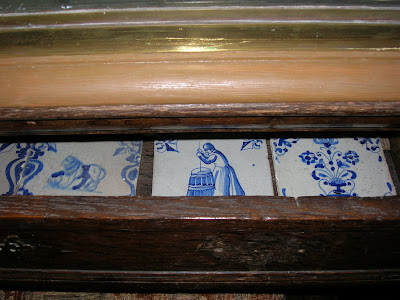Saturday, June 18th, was the day we set aside for our "JoVo Day of Service" as requested by President Monson in commemoration of the 75th anniversary of the welfare program. We invited the Amsterdam missionaries to join the jovos in painting the apartment of an elderly woman in the Amsterdam Ward.
Sister Tanner, who has only been in the mission for 10 days, is busy taping the door frame.
Elder Brockbank, one of the Assistants to the President, has taken time from his many responsibiities to be the energy behind this paint roller. He's doing a good job.
Elder Favero (front) is Elder Brockbank's companion. Our district leader, Elder Alexander, isn't sure where to start first but Ramon Kasper, our JoVo President (left) is getting right to work.
Now Elder Alexander is getting into the project. He's pretty handy with a paint brush.
"Elder Salden - do you know where you're going with that ladder?"
His hard-working companion, Sister Salden, comes loaded with long handles for the paint rollers. Now we can reach the high places on the walls without having to use a ladder.
Elder Beckstrand shares the tape with Vanessa. She is one of our JoVos, and it is obvious she has had some REAL experience with a paint brush. It was fun to watch this little lady slap on the paint.
"Now don't forget to size this wall before you paint it," Elder Salden reminds us.
"Okay, I'll get right on that," says Elder Favero.
Elder Schulte comes to Elder Beckstrand for more paint. It's a full-time job keeping everybody busy.
"Shall I let him have it?" asks Sister Tanner. This might be a good opportunity - he doesn't suspect a thing.
Okay, keep those rollers moving. Lots of rooms, so little time.
I was wishing for the better quality paint we have back in the states. This stuff doesn't cover very well. It's going to take at least 2 - maybe 3 coats to really give us good coverage.
Sister de Groot is taping the cupboards in the kitchen. She is being aided by Brother de Nijs, the high priest quorum president in the Amsterdam Ward. He has been helping Priscilla get the apartment ready to occupy.
By noon everyone is ready for lunch. Sandwiches, chips, apples, and cookies help fill up the hard-working missionaries and jovos. The food disappears in no time.
Okay everyone - smile pretty for the camera. The one with the most paint on their clothes obviously worked the hardest! It looks like maybe Sister Salden is the winner. (Of course, people like myself who changed before the picture was taken look like we didn't lift a brush the whole day. Just for the record - I did. Honest.) It was a successful day and much was accomplished.




















